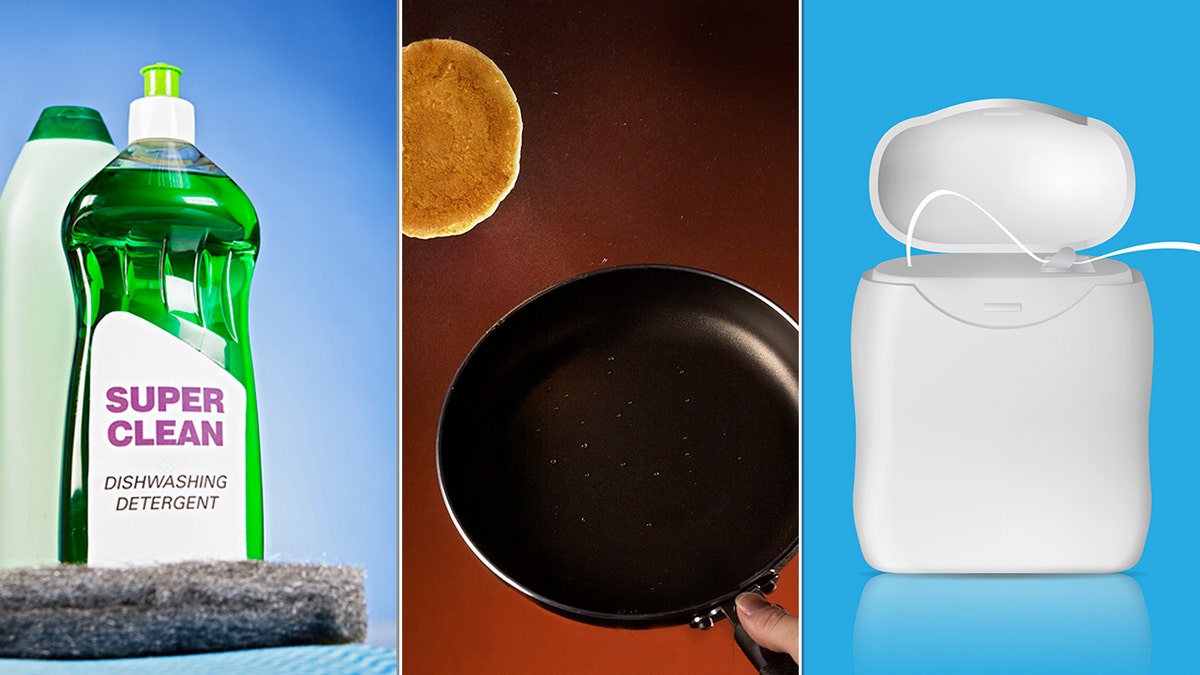New Study: Oral-B Glide dental floss contributes to elevated levels of toxic PFAS chemicals in the body
A new study is revealing that Oral-B Glide dental floss contributes to elevated levels of toxic PFAS chemicals in the body.
Chemists may have uncovered a surprisingly simple way to break down PFAS — also known as "forever chemicals" — that are harmful to humans, livestock and the environment.
PFAS, which stands for "per- and polyfluoroalkyl substances," have been around since the 1940s, according to EPA.gov.
They are a group of chemicals used to make products that are resistant to heat, stains, oil, grease and water.
Teflon pans, laundry detergent, dish detergent and food packaging all contain them, according to Purewaterbog.com — as do other products that provide convenience in daily life but leave chemicals behind for generations.
SCIENTISTS FIND A NEW ASTEROID CRATER THAT MAY SHED LIGHT ON DINOSAURS' EXTINCTION
A team of chemists at Northwestern University in Evanston, Illinois, conducted the breakthrough research.

Many everyday items contain PFAS (also known as "forever chemicals"). Researchers note that they stay in the environment "for decades to come." (iStock; Allentown Morning Call/Getty; iStock)
"Bacteria can’t eat them; fire can’t incinerate them; and water can’t dilute them," noted Northwestern Now, a university publication, about the challenges that PFAS present.
"If these toxic chemicals are buried, they leach into surrounding soil, becoming a persistent problem for generations to come," the publication also said.
"PFAS [have] become a major societal problem," chemist William Dichtel, who led the study along with fellow university chemist Brittany Trang, told the publication.
PENNSYLVANIA MAN FINDS RARE PURPLE PEARL INSIDE A CLAM AT DELAWARE RESTAURANT: REPORT
"Even just a tiny, tiny amount of PFAS causes negative health effects, and it does not break down," he noted.
He added, "We can’t just wait out this problem. We wanted to use chemistry to address this problem and create a solution that the world can use."
So how did the researchers solve the problem?
Basically, with soap and water.

The mixture chemists came up with combined a bit of organic solvent with sodium hydroxide — a common component of soap — in water. (iStock)
Using low temperatures and "inexpensive, common reagents," the team created a process that causes two major classes of PFAS compounds to fall apart — "leaving behind only benign end products," the research noted.
The mixture combined a bit of an organic solvent with sodium hydroxide, "a common component of soap," in water, noted Science.org.
DOGS CRY TEARS OF JOY WHEN REUNITED WITH THEIR OWNERS: STUDY
When the chemists heated the mix to boiling, it easily degraded one of the largest subsets of PFAS compounds, they added.
PFAS have made their way out of consumer goods and into drinking water and even into the blood of 97% of the U.S. population, according to the university publication.
"Although the health effects are not yet fully understood, PFAS exposure is strongly associated with decreased fertility, developmental effects in children, increased risks of various types of cancer, reduced immunity to fight infections and increased cholesterol levels," they reported.

Many everyday items contain PFAS, which is strongly related to health issues such as high cholesterol, learning issues in kids — and cancer. (iStock)
"Recently, the EPA [Environmental Protection Agency] revised its recommendations for PFAS essentially down to zero," Dichtel said.
"That puts several PFAS into the same category as lead."
The new mixture doesn’t work on all PFAS compounds, according to Science.org.
However, "related approaches might offer communities a cheap way to rid soils and drinking water of contaminants that currently put millions of people at risk for cancer and other diseases," they reported.
CLICK HERE TO GET THE FOX NEWS APP
Dichtel told Northwestern Now, "It’s exciting because of how simple — yet unrecognized — our solution is."
The research was published on Aug. 19, 2022, in the journal Science.





















